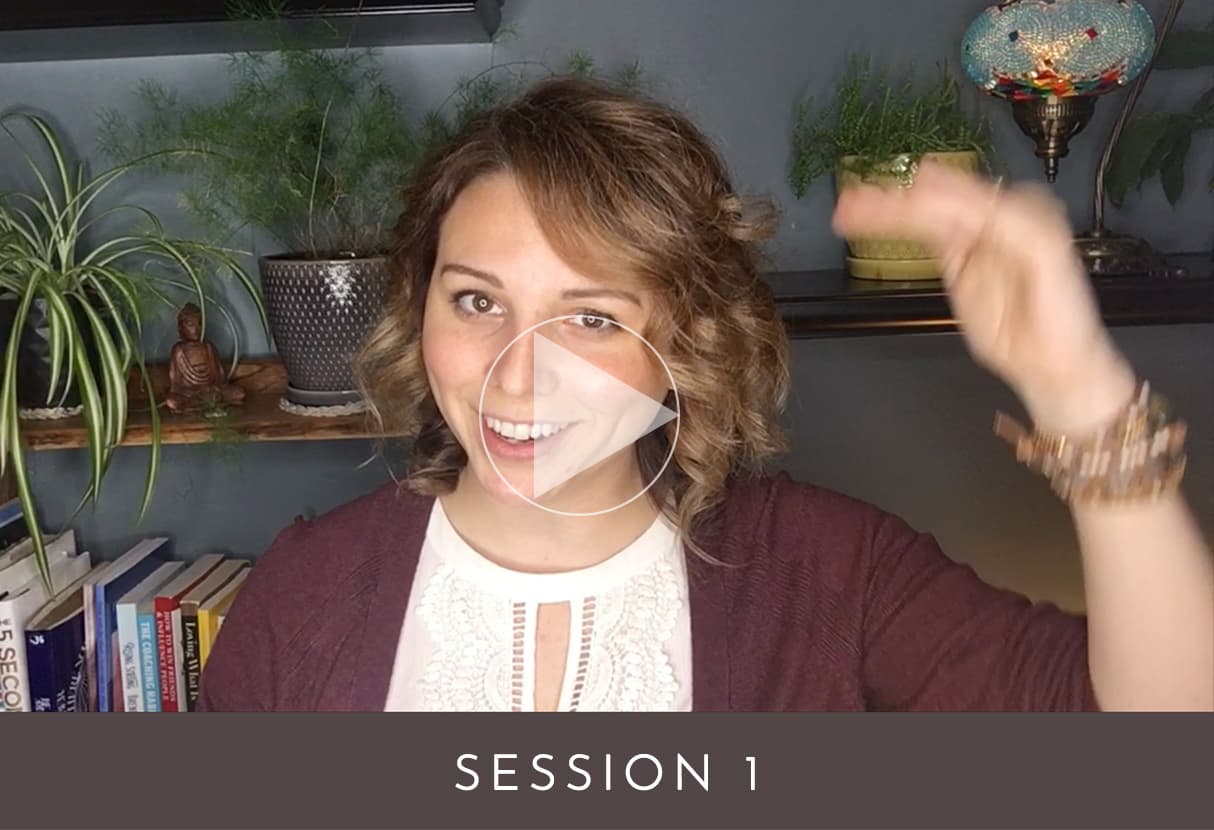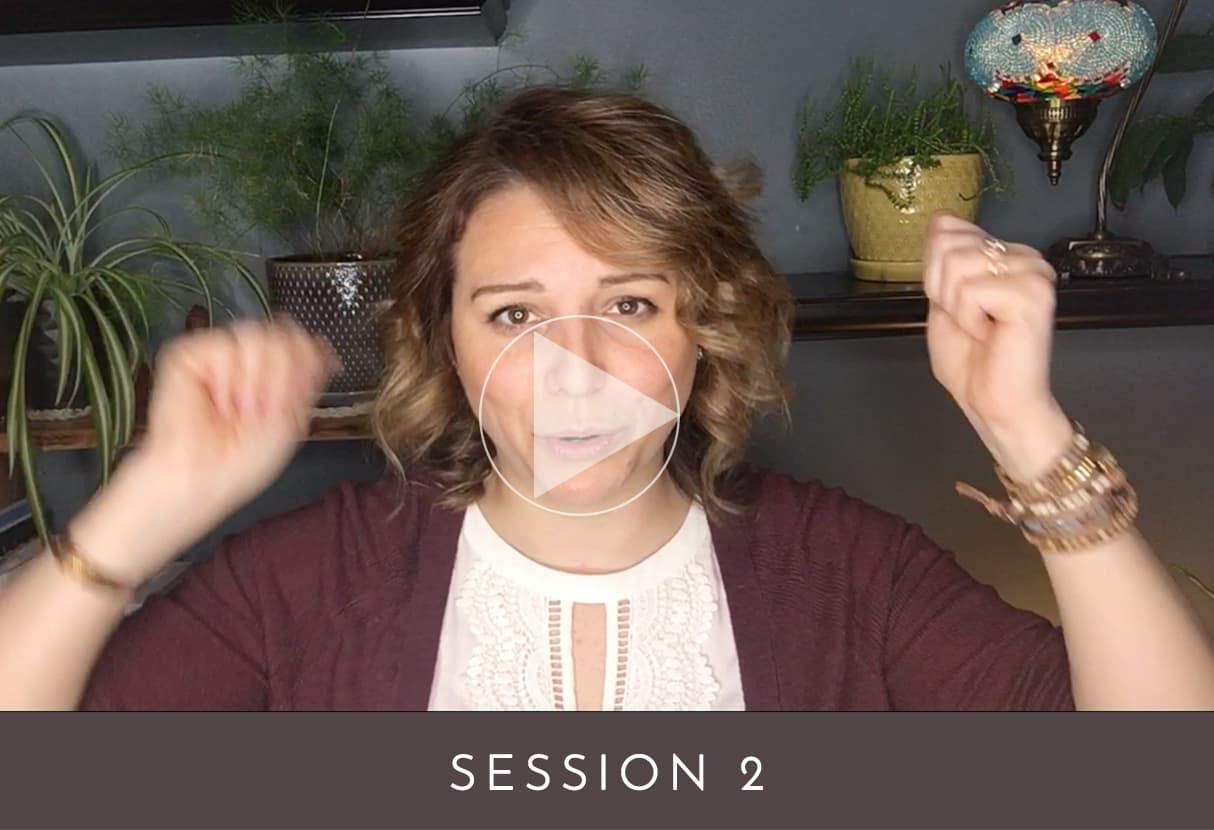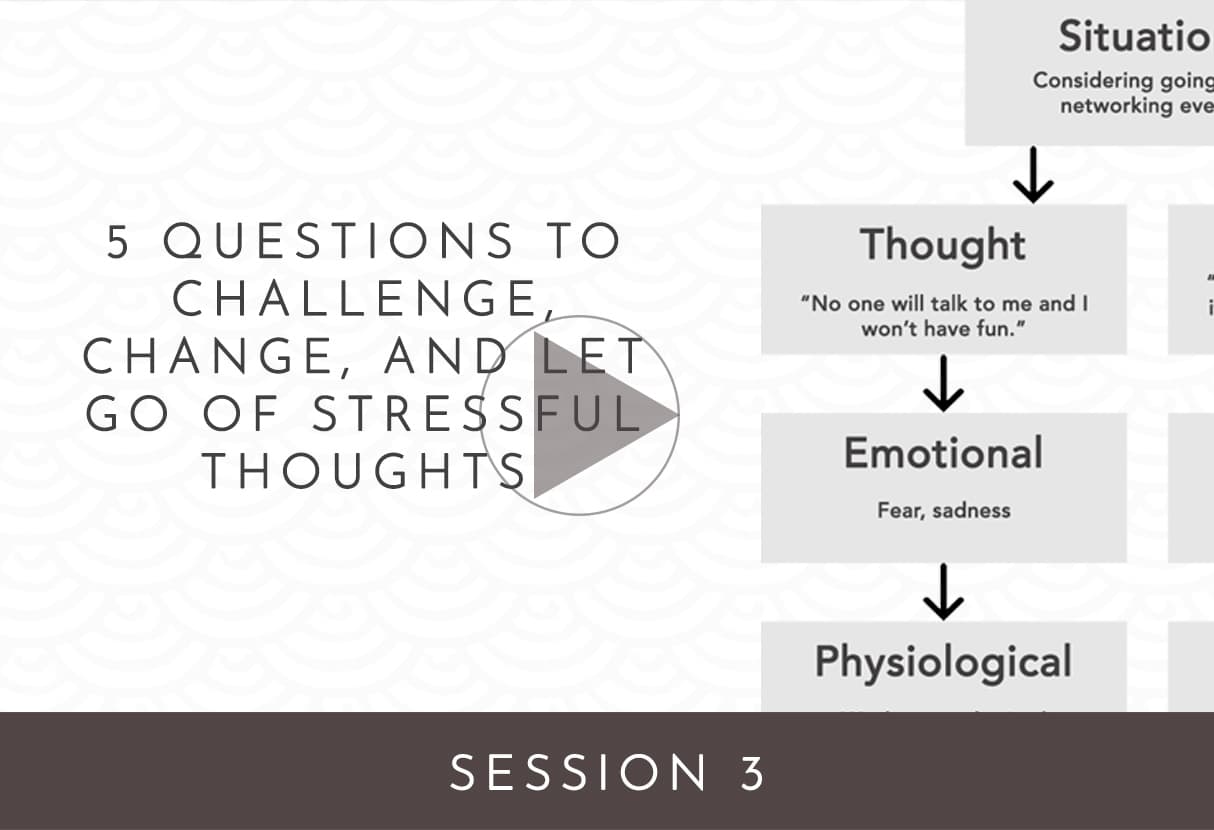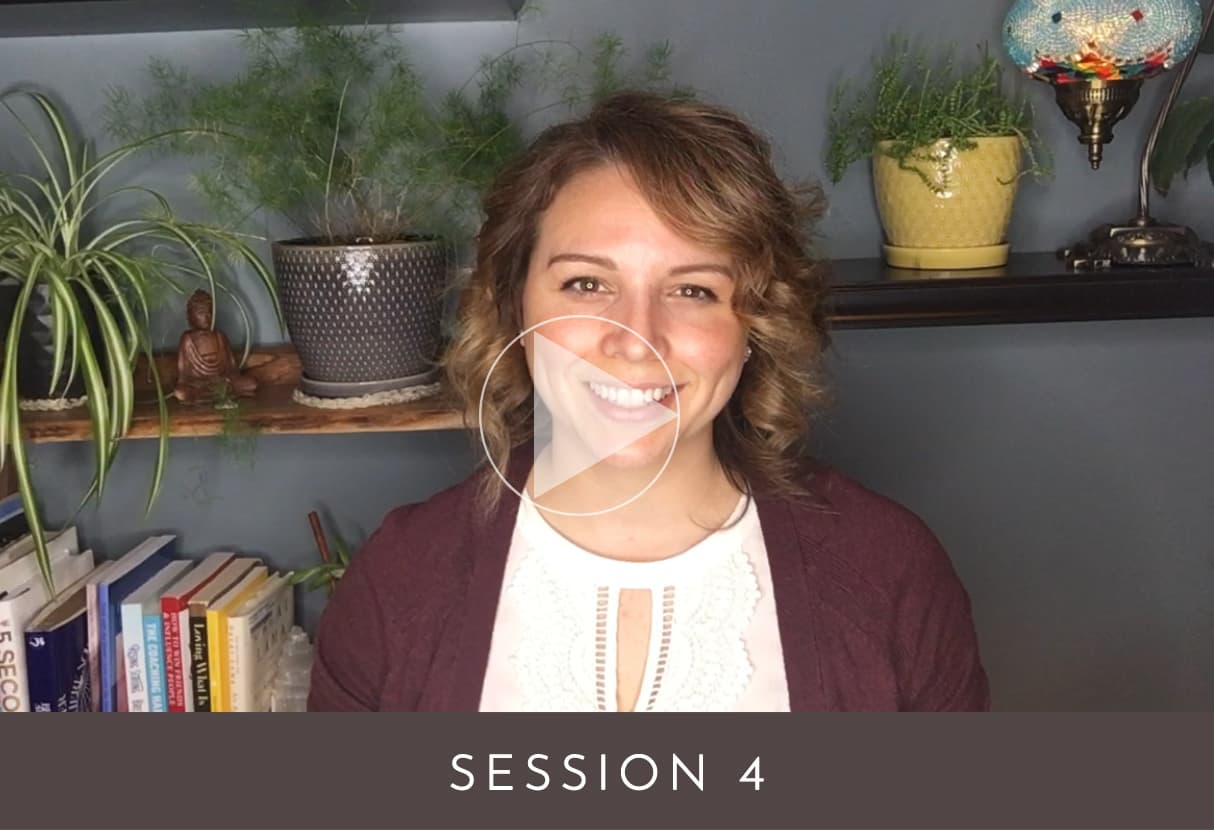This mini course reflects some of the fundamental principles from my signature one on one coaching program. You will experience a bit of what I teach in these in depth, personalized sessions as you work your way through the course.



STRESS DETOX
MINI COURSE



Welcome to Session 1 of the Stress Detox Mini Course!
We’ll start this mini course with a simple act to help give you instant relief from stress and anxiety in the moment when you’re experiencing it.
Before watching the video, let’s first take a look at what stress is, why we experience it, and why this exercise can have a profound impact on your anxiety now, and with practice, create a lasting effect.
What is stress and why do I have it?
Stress [aka fear] is a normal response. Essential even. It’s the reason you’re here today. Your ancestors who developed a quick stress response were the ones who survived the harsh existence of life before modern healthcare, access to healthy foods and Netflix.
Here’s where the stress response comes in handy.
You’re walking along a path, hear a rustle, and before you even have a chance to ask yourself “what was that?” your brain and body respond in microseconds.
You either run away, prepare to fight, or freeze. If that was a poisonous snake or a hungry bear you heard, your immediate response greatly improves your chances of survival.
If you didn’t have this automatic response and relied on your cortex (the conscious thinking part of your brain) to kick in, analyze all the information coming from your senses, match that up with your memory of similar situations and stored information — you’d be dead before you came to a conclusion.
In the blink of an eye, the sound that you heard hits a spot in your brain called the amygdala which triggers your Fight or Flight mode.
You have two main modes: Fight or Flight (your sympathetic nervous system) and Rest and Digest (your parasympathetic nervous system).
A stressful event triggers the Fight or Flight mode and sends a host of chemicals coursing through your body causing several things to occur immediately, and with good reason.
- Adrenaline increases your heart rate and elevates your blood pressure sending much needed oxygen to your muscles and brain.
- Cortisol increases sugars in the bloodstream, enhances your brain’s and muscle’s use of glucose so you can think quickly, run or fight.
- Your non-essential systems like digestion, immune and reproductive systems are all but shut down to save energy.
- Your breath gets shorter taking small quick breaths so you can take in more oxygen quickly.
- Your sight and hearing become sharper so you can better take in your surroundings.
Exercise #1: What to do when you feel stress or anxiety
As a first step: Breathe.
I know, it sounds so simple and you’ve heard it a million times, yet this practice can have profound and lasting effects on your stress and anxiety.
When you start feeling stressed or anxious, the following deep breathing exercise will work to ‘flip the switch’ from your Fight or Flight mode to your Rest and Digest mode.
When we’re stressed we take short, quick and shallow breaths. Doing the opposite tells the brain “I’m safe, it’s ok” and so the physiological symptoms of stress start to subside.
Over time, as you make mindful breathing a consistent practice – where you’re fully present and focus on your breath and not thinking about the 20 other things you need to do today – you’ll see an increase in your resiliency to stress.
According to neuroscience research, mindfulness practices like those you’ll be learning in this course, dampen activity in our amygdala and increase the connections between the amygdala and prefrontal cortex. Both of these parts of the brain help us to be less reactive to stressors and to recover better from stress when we experience it.
Action plan
Make this a regular practice.
- Do this exercise when you start to feel stressed, anxious, angry, frustrated, irritated or any negative or uncomfortable feelings.
- Set a timer and breathe for at least a few minutes.
- Before breathing, rate your stress, anxiety, anger or irritation on a scale of 1-10. After the breathing exercise, rate it again. If necessary, continue the breathing exercise until your stress rating has been cut in half.
What will get in your way from doing this?
New habits are hard to form. What will make you remember to do this exercise when you are feeling stressed? Post-it notes, a charm on a bracelet, asking your partner to remind you? What will get in your way? Write down 3 ways you can overcome those obstacles.
Coming up next
Do you find yourself automatically reacting with anger, fear or frustration to things people say or stressful situations? Do you wish you had space to choose how you would like to respond instead?
In the following session, we’ll take this exercise to the next level and start transforming your relationship with your thoughts and stress to develop the means to face whatever life throws at you with more grace and ease.
Apply for a free Breakthrough Strategy Session to create your Resilience Roadmap to a calm and confident You.
Please note, due to time and space limitations, these calls are reserved for parents, caretakers and leaders who are ready for change, serious about showing up for themselves, and excited about stepping into a new way of being where they are calm, confident and enjoying the sh*t out of life (or ready to get excited!).



Disclaimer: The information contained in this course is intended for educational and inspirational purposes only, and is made available to you as self-help tools for your own use personal journey toward health and happiness. It is not a substitution for medical advice, diagnosis or treatment from a licensed mental health professional.
Free access to the Stress Detox mini course is available for a limited time only.




